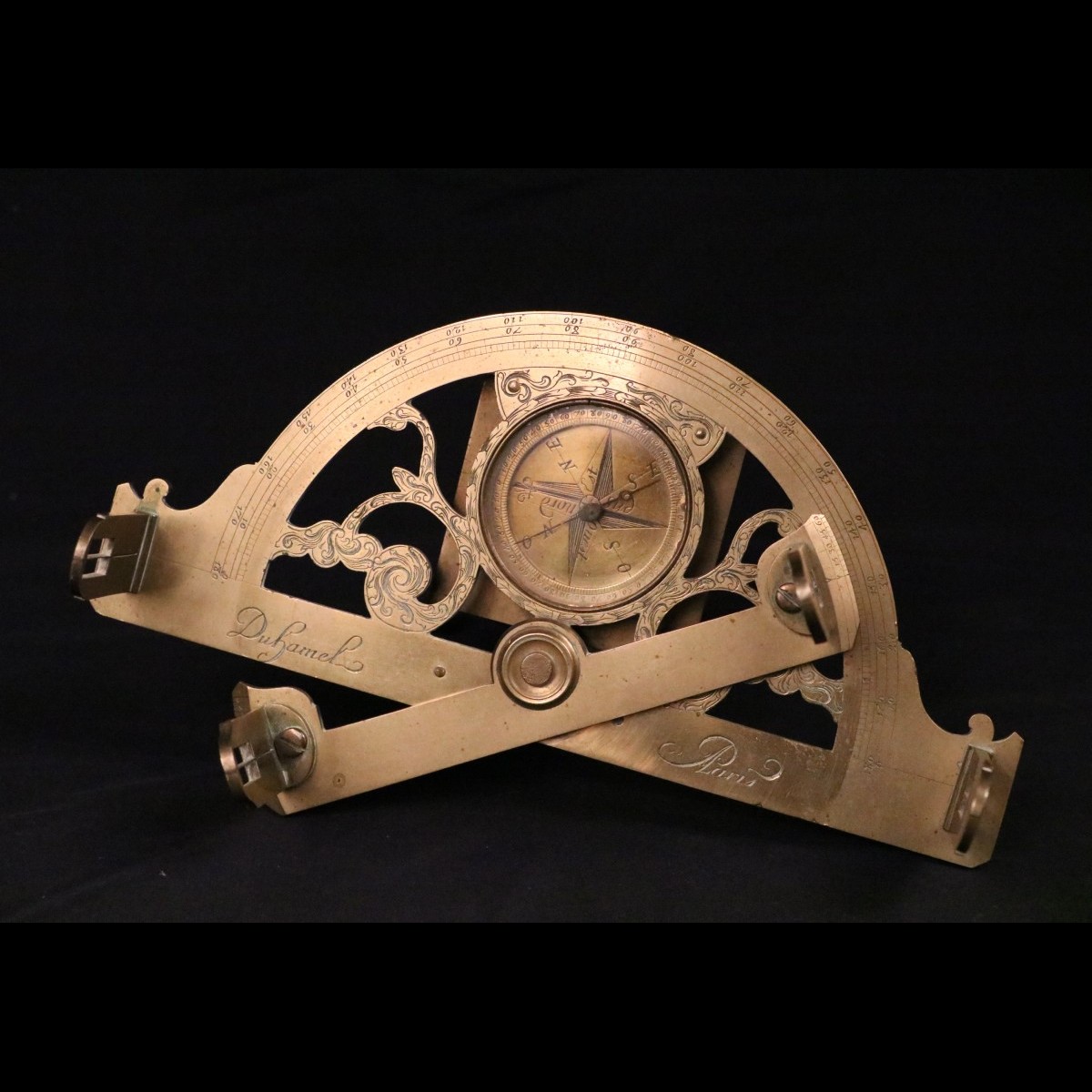
Pinnule graphometer
Jean-Jacques Duhamel, the elder (1707–1766) or the son (active between 1763 and 1770)
Paris, mid-18th century
Brass, glass and magnet (instrument); iron and baize (box)
Still in its original box, this instrument, which is signed “Duhamel A Paris”, was used by land surveyors and topographers. The graduated semi-circular limb is mounted on a staff via a ball-and-socket joint, and fitted with two alidades, one fixed and the other movable. It was used to measure angles between objects located on the same horizontal or vertical plane. According to the Encyclopédie, the “pinnules help to align the alidade with the object to be observed, and the slits are used to discern certain parts of the object in a very specific manner; this is why the slits – which are rather wide to allow the object to be seen more easily – have a thin metal blade or ‘hair’ stretching across the midline, from top to bottom”.
The graphometer was used to draw the mid-18th-century Cassini map of the Kingdom of France.